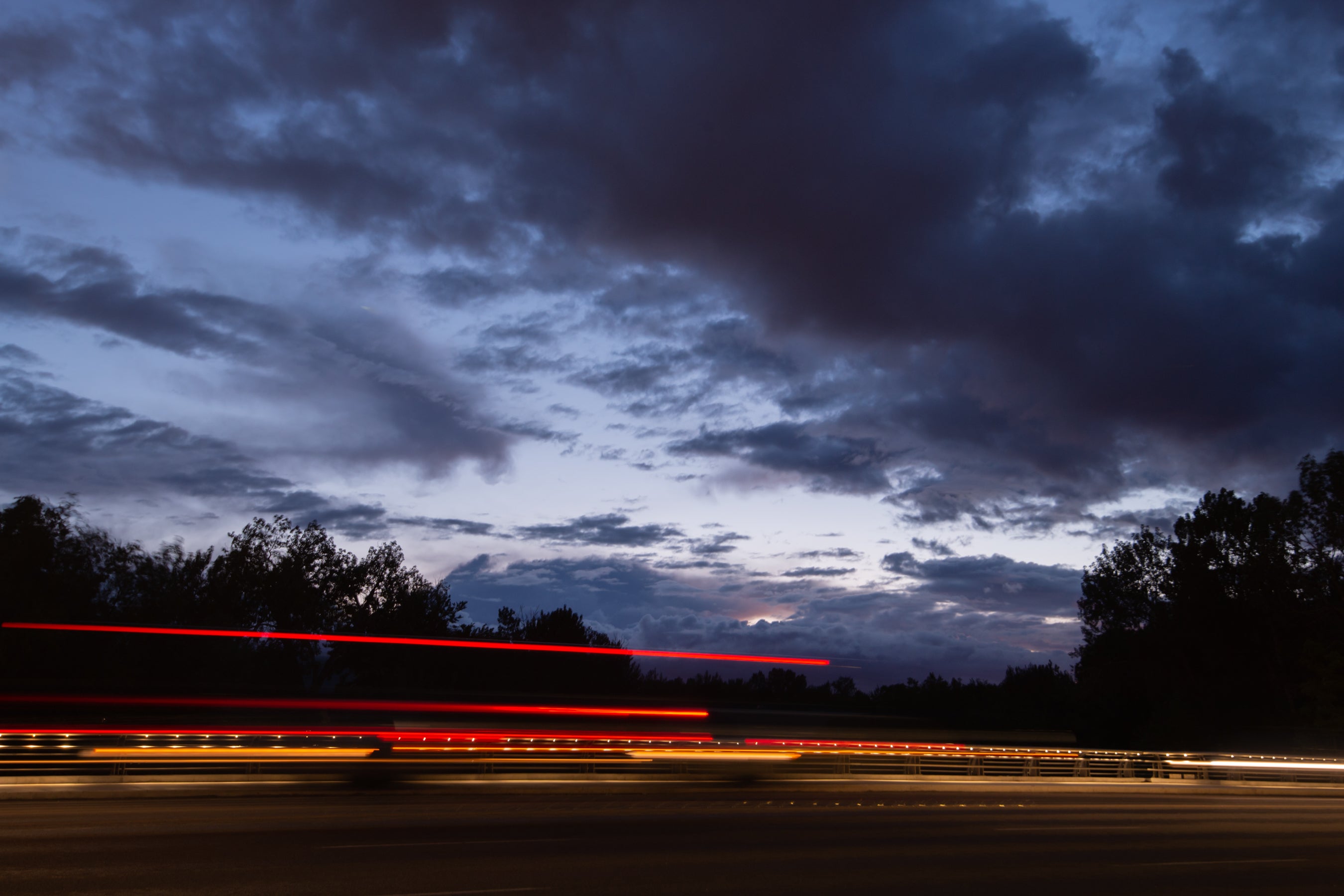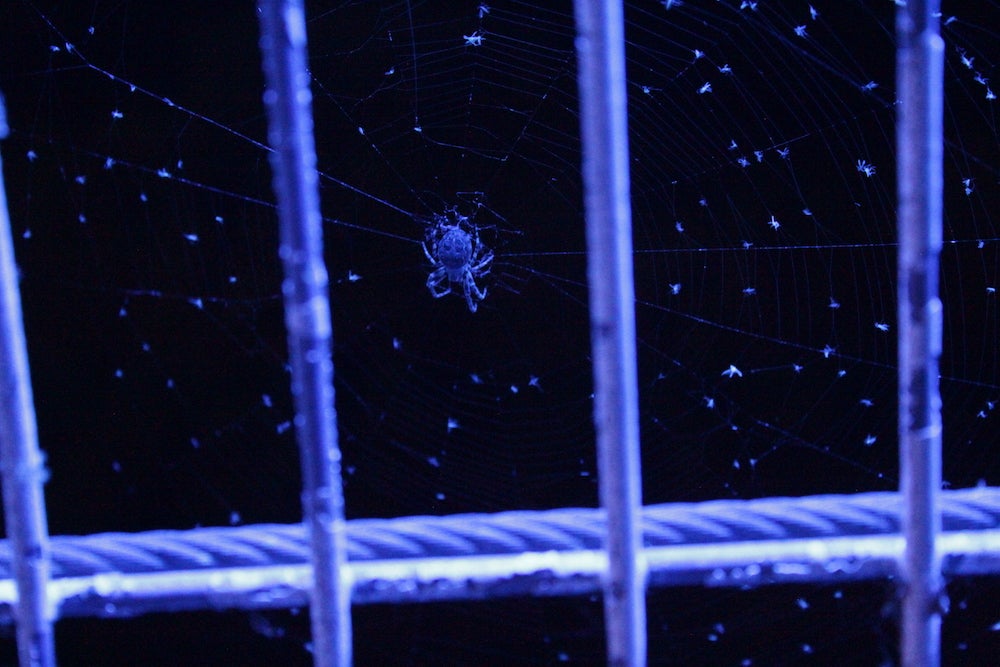
In the fall of 2018, third-year biology doctoral student Dylan Gomes was on his way to his sister’s wedding, held in a picturesque corner of France. It was dark, he had missed his train stop and everyone was speaking French. So he wandered out onto a bridge at night with his luggage and began counting spiders.
This is not how most research stories begin, but for Gomes, counting spiders was old habit. That night, the serendipity of science turned a potentially problematic journey through the Loire River Valley into an evening of discovery.
“I think once you think like a scientist, you just can’t turn it off,” admitted Gomes.
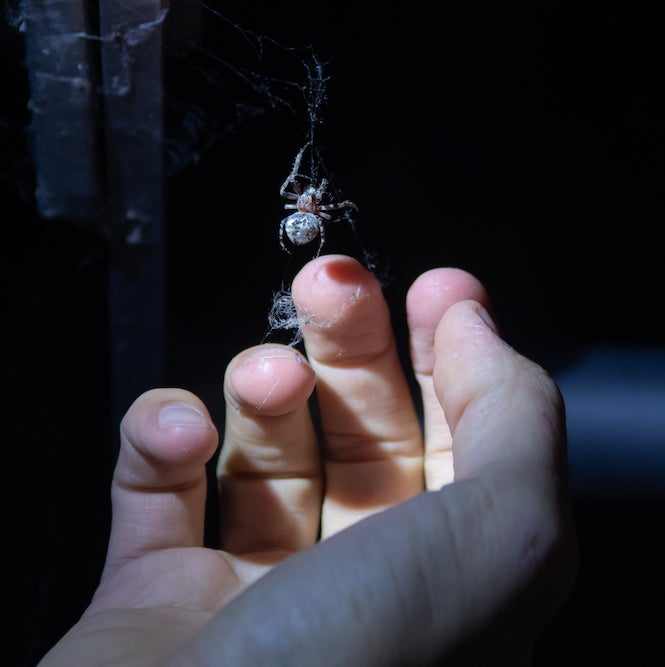
Alongside Jesse Barber, an associate professor of biology and head of Boise State’s Sensory Ecology Lab, Gomes has been studying the interaction of wildlife – namely birds, bats and insects in Idaho – with anthropogenic noise and light pollution for years. Over the past three years, Gomes’ research has extended to include orb-weaving spiders on Idaho’s Pioneer Mountain.
Orb-weaving spiders are large-bodied and very dextrous, and instead of avoiding loud environments like most other species do, these spiders seem to prefer the noise from white water rushing beneath bridges. However, their relationship to both noise and light pollution is not well understood.
So when he wandered onto the Saint-Symphorien suspension bridge in Tours, France, Gomes felt his ‘spidey-senses’ tingling yet again.

The Saint-Symphorien, which extends over the Loire River, is constructed with alternating panels. Every other panel is lit from above by a blue fluorescent tube light, leaving the panels in between dark. This design made the structure a perfect experimental research site.
After a week of studying and observing dozens of orb-weavers in 88 panels, Gomes found that there were fewer but larger orb-weavers in the lit panels, and these spiders were also catching more prey.
Gomes published his novel research in science journal PeerJ, but felt that there was still more to be investigated. That’s why, over the course of the summer, Gomes and research assistant and Boise State alumnus Colton Herzog (BS, biology, ’20) continued the exploration of the orb-weaver’s ecological role locally on 10 bridges along the Greenbelt, straddling the Boise River.
To conduct this research, Gomes collected data on everything from spider health and size, web size and placement, as well as prey capture, and then analyzed this data in reference to light and sound pollution.
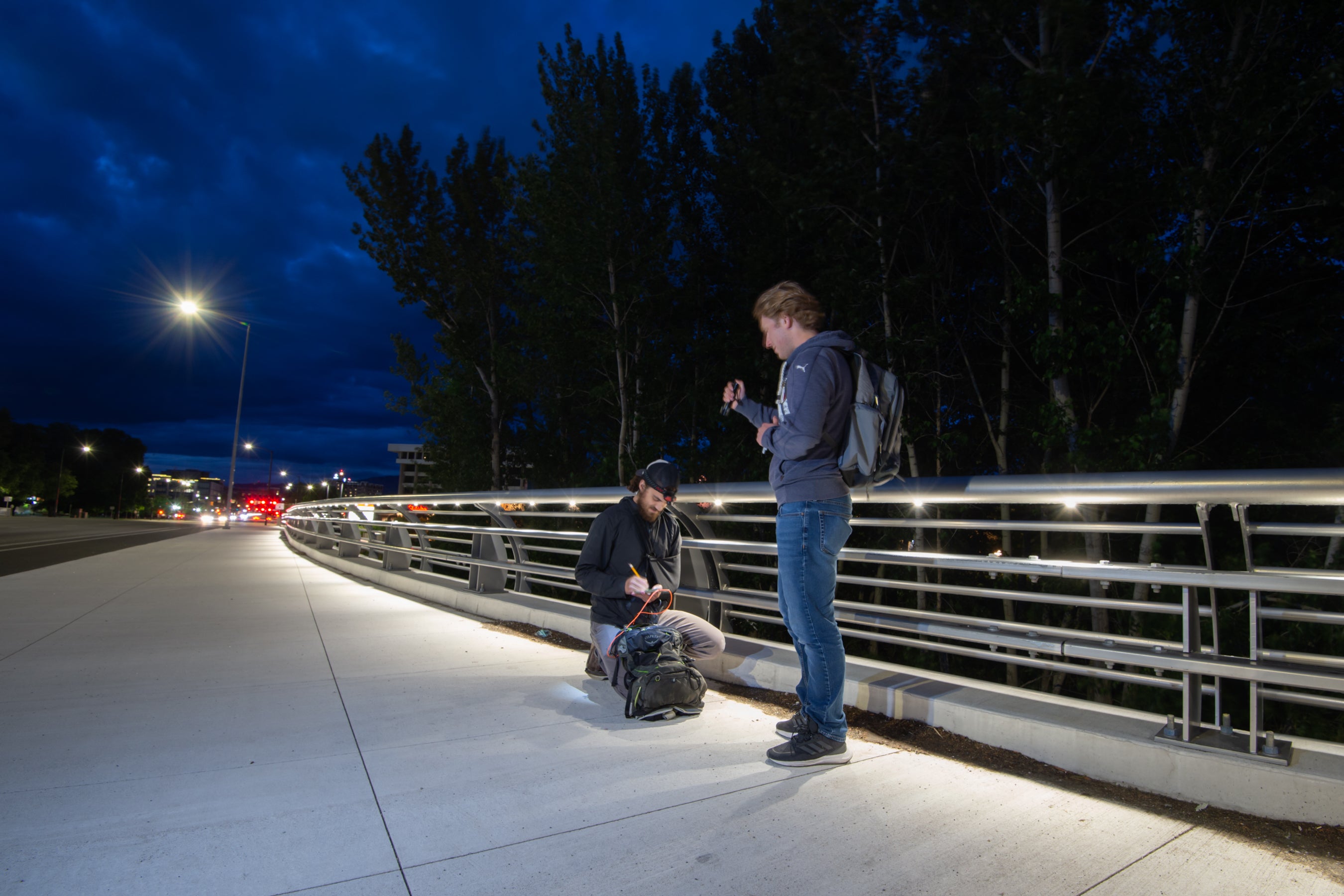
“Some creatures have senses that we do not – like echolocation in bats or dolphins and electrolocation in fish. It is the discovery of these sorts of senses that lead to ‘inventions’ like RADAR or SONAR systems,” said Gomes. “If we do not understand how other things perceive this world, we will fail at many things: like wildlife management, why our pollinators are declining and pest control.”
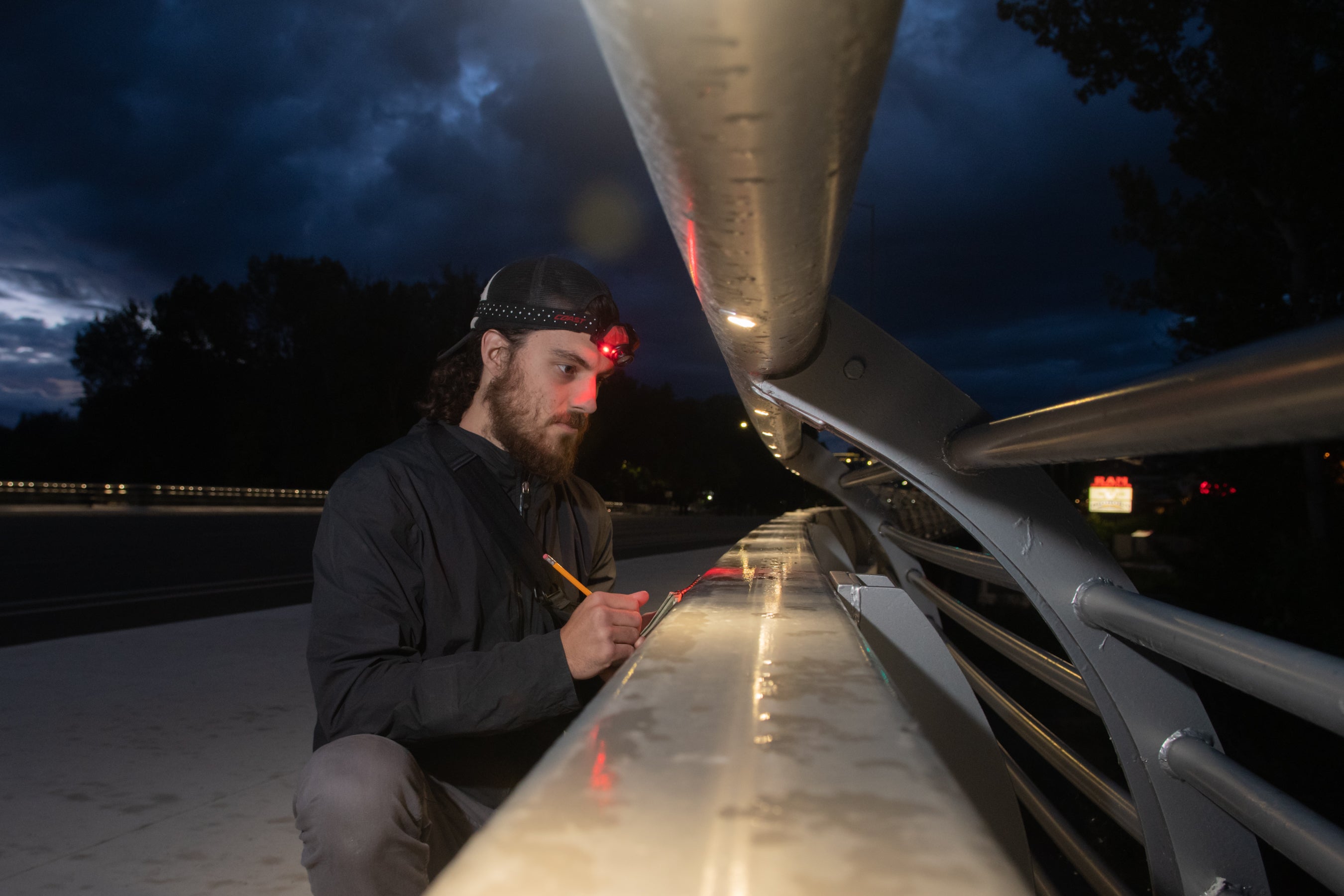
While these spiders might not seem particularly remarkable or important to most people, Gomes posits that looking deeply into the sensory ecology of even a single species can be essential to understanding roles of all creatures in life’s interconnected web.
“No one is going to lose sleep at night if we were to lose a single species of spider. But people like Rachel Carson do lose sleep over collapsing ecosystems. […] Nature has a way of constantly staying in fluctuating balance. Too many predators are a bad thing, too few predators are a bad thing. If we eliminated spiders, our insect populations would demolish the world as we know it. Everything has its role to play,” said Gomes.
Gomes’ work on the Greenbelt bridges is supported by Boise State University Ecology, Evolution, and Behavior Redfield Fellowship, and the American Arachnological Society.
